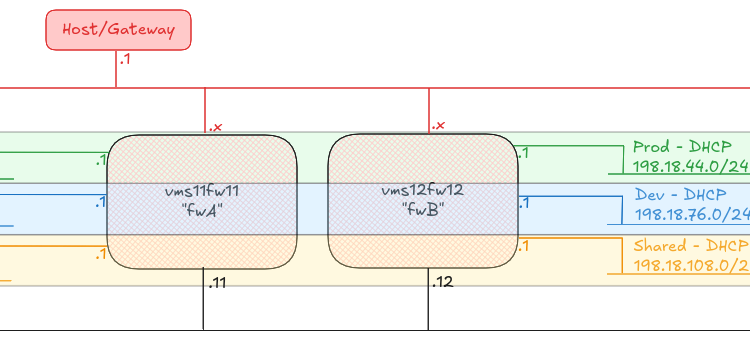I’m in the process of building a Network Firewall for a work environment. This blog post is based on that work, but with all the identifying marks stripped off.
For this particular project, we standardised on Alma Linux 9 as the OS Base, and we’ve done some testing and proved that the RedHat default firewalling product, Firewalld, is not appropriate for this platform, but did determine that NFTables, or NetFilter Tables (the successor to IPTables) is.
I’ll warn you, I’m pretty prone to long and waffling posts, but there’s a LOT of technical content in this one. There is also a Git repository with the final code. I hope that you find something of use in here.
This document explains how it is using Vagrant with Virtualbox to build a test environment, how it installs a Puppet Server and works out how to calculate what settings it will push to it’s clients. With that puppet server, I show how to build and configure a firewall using Linux tools and services, setting up an NFTables policy and routing between firewalls using FRR to provide BGP, and then I will show how to deploy a DHCP server.
Let’s go!
The scenario

To prove the concept, I have built two Firewall machines (A and B), plus six hosts, one attached to each of the A and B side subnets called “Prod”, “Dev” and “Shared”.
Any host on any of the “Prod” networks should be able to speak to any host on any of the other “Prod” networks, or back to the “Shared” networks. Any host on any of the “Dev” networks should be able to speak to any host on the other “Dev” networks, or back to the “Shared” networks.
Any host in Prod, Dev or Shared should be able to reach the internet, and shared can reach any of the other networks.
Read More
